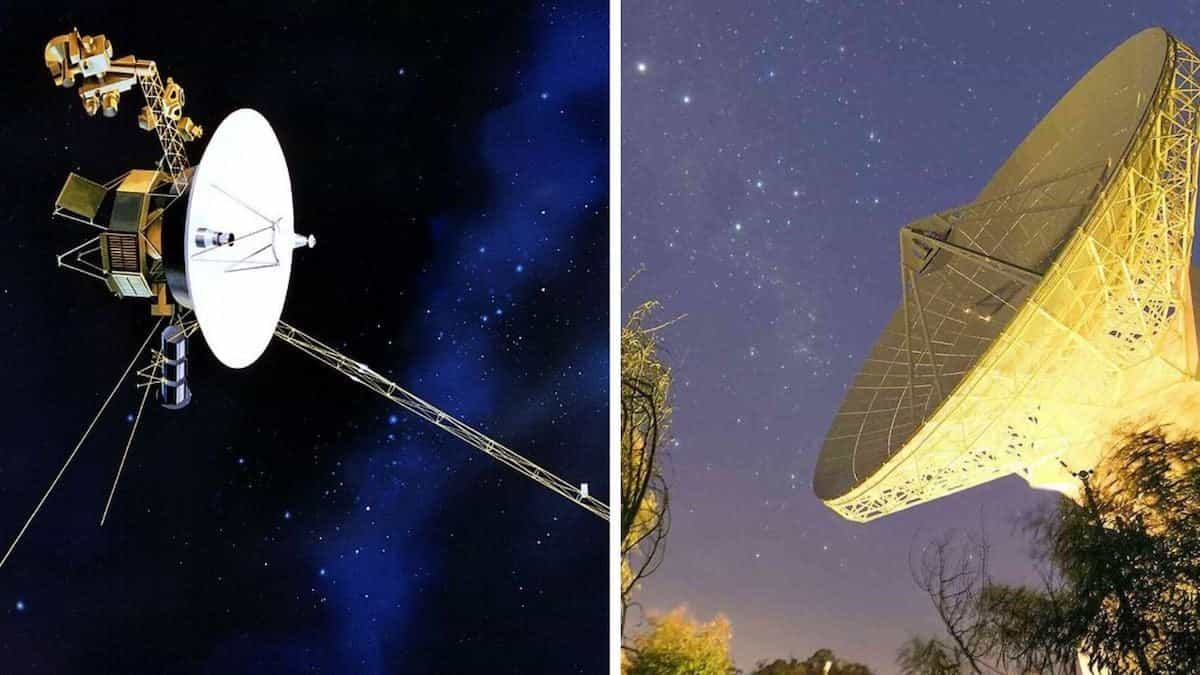Show table of content Hide table of content
When humans contemplate communication with extraterrestrial intelligence, music often emerges as a universal language. On May 31, 2025, a groundbreaking event will send Johann Strauss II’s masterpiece “The Blue Danube” into the cosmos, correcting a historical oversight in humanity’s message to the stars.
The cosmic journey of Earth’s cultural messages
In 1977, NASA launched the Voyager program with two identical space probes designed to study Jupiter, Saturn, Uranus, Neptune, and 48 of their satellites. Beyond scientific exploration, these mechanical ambassadors carried something remarkable—the Golden Record, officially named “The Sounds of Earth.”
This 12-inch gold-plated copper disk contains a carefully curated representation of Earth’s diversity: 115 images, natural sounds, greetings in 55 languages, and 27 musical pieces. From Mozart to Chuck Berry, these selections represent humanity’s cultural achievements. The record includes natural sounds like wind, thunder, animal calls, and even a baby’s cry—a comprehensive audio portrait of our world.
Space communication has fascinated scientists for decades, with NASA recently capturing unprecedented footage of Martian weather phenomena. Each discovery brings us closer to understanding what we might share with potential cosmic neighbors.
Despite the Golden Record’s extensive collection, it omitted “The Blue Danube,” an iconic classical composition that has become synonymous with space in popular imagination. This waltz, composed in 1866, gained celestial association through Stanley Kubrick’s 1968 film “2001: A Space Odyssey,” where it accompanied the famous docking sequence, earning it the nickname “The Space Anthem.”
Vienna’s musical initiative reaches for the stars
The omission of Strauss’s masterpiece from humanity’s cosmic message is being addressed through an ambitious project. To celebrate the 200th anniversary of Johann Strauss II’s birth in 1825, Vienna—his birthplace—has partnered with the European Space Agency (ESA), which marks its 50th anniversary in 2025.
This collaboration will culminate in “Waltz into Space,” a global event centered in Vienna but broadcast worldwide. The Wiener Symphoniker (Vienna Symphony Orchestra) will perform “The Blue Danube” in a concert that will be livestreamed through Vienna’s official website, YouTube channel, and Instagram account.
Science This strange red lake in Tanzania turns animals to ‘stone’.
Unlike the physical Golden Record, this musical message will travel as electromagnetic waves at light speed. The performance will be recorded, digitized, and transmitted from ESA’s DSA 2 station in Cebreros, Spain. Scientific calculations indicate the signal should reach Voyager 1 in approximately 23 hours.
The cosmic communication resonates with current space developments, as debates about the future of human space presence continue to evolve among industry leaders. While some focus on hardware and infrastructure, Vienna’s initiative emphasizes cultural connection.
Public participation in interstellar communication
What makes this cosmic concert truly remarkable is its interactive element. Through the “SpaceNotes” initiative, music enthusiasts worldwide can participate in this interstellar transmission. The project invites people to visit the event’s official website and select their favorite note from “The Blue Danube.”
All 13,742 notes of the composition are available for selection and reservation. Once claimed, these notes will be collectively transmitted toward the stars, creating a uniquely collaborative message from Earth to potential extraterrestrial listeners.
Vienna has promoted this cosmic correction with humor and creativity. A promotional teaser shows a NASA scientist who adores “The Blue Danube” realizing with horror that he forgot to include it on the Golden Record—just as the Voyager probes launch.
Public viewing events will take place simultaneously in Vienna, New York, and Madrid, allowing global participation in this historic transmission. The concept has generated significant excitement on social platforms, with trending accounts across various media sharing enthusiasm for the celestial musical venture.
Music as humanity’s cosmic ambassador
The selection of music for interstellar communication raises fascinating questions about representation. The original Golden Record included diverse musical traditions—Western classical music, Japanese shakuhachi, Navajo chants, Peruvian panpipes, and Georgian polyphonic singing among others.
Adding “The Blue Danube” completes this cosmic playlist with a piece that bridges high culture and popular imagination. The waltz’s flowing melody mimics the graceful movement of celestial bodies, making it particularly appropriate for cosmic transmission.
Science 50 years later, a quantum mystery has finally been solved.
Strauss might never have imagined his composition traveling beyond Earth, yet its selection demonstrates how cultural artifacts gain new meanings across time. The waltz, originally composed to lift Austrian spirits after military defeat, now represents human artistic achievement to unknown intelligences.
Whether alien civilizations will ever intercept and decode these musical messages remains unknown. However, these projects reflect humanity’s persistent desire to reach beyond our planet and share what we consider most valuable about our existence.
As the May 31st event approaches, it reminds us that music may indeed be our most universal language—one that transcends not only cultural boundaries on Earth but potentially biological and technological ones across the vast cosmos.


